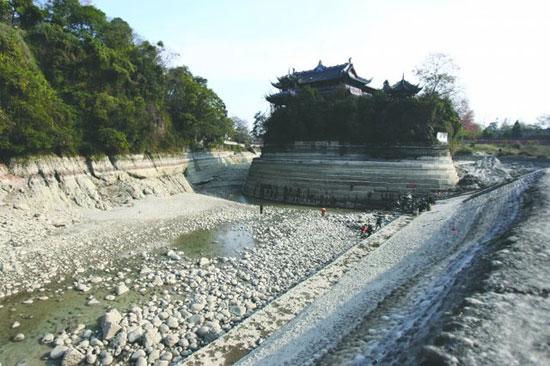

Renovation for Dujiangyan
When the Terracotta Warriors were being made, so was the Dujiangyan irrigation system. The architectural wonder was built two thousand two hundred years ago in what is Sichuan province, in Southwest China, today. A number of exciting archaeological discoveries have been made here over the years and archaeologists are now looking forward to some fresh discoveries as the system's latest renovation gets underway.
Despite being built about two millennia ago, the Dujiangyan irrigation system is still used today to irrigate over 5300 square kilometres of land in the region, that's about a third of the size of Beijing.
Dujiangyan is undergoing its largest renovation since 2002, taking place during the dry season when the water has dried up. The watering system is also a crucial window for archaeological discoveries.
"We found this statue during a renovation in 1974- it is almost 2000 years old. There are engravings on its chest and on the sleeves here which tell us it was made under the instruction of Li Bing, who built the Dujiangyan irrigation system," Li Jin from Dujiangyan Supervising Office says.
The statue is almost 3 meters tall, weighs 4 and a half tons and is unusual in that it has been preserved so well.
This statue depicts a worker at the Dujiangyan. Archaeologists believe it is one of 3, built to be a set.
"The statue's head and a part of its shoulders were washed away by water. The inscriptions are also unrecognisable," Li says.
Archaeologists found two of the three statues 38 years ago and are hoping to complete the set in renovations this time.
One key procedure of the renovations is removing excessive mud. Engineers know how to regulate this thanks to original iron bars marking out the optimum level of mud for the project to work. Over time the bars themselves have become artefacts.
The four bars here are from the last four periods of Chinese history. The first one was positioned during the Ming dynasty, the second in the Qing dynasty, the third during the Republic of China and the last one from the People's Republic of China.
The next renovation won't happen for 20 years, so archaeologists are eager to uncover as much of the past as they can.
Copyright ©1999-2018
Chinanews.com. All rights reserved.
Reproduction in whole or in part without permission is prohibited.